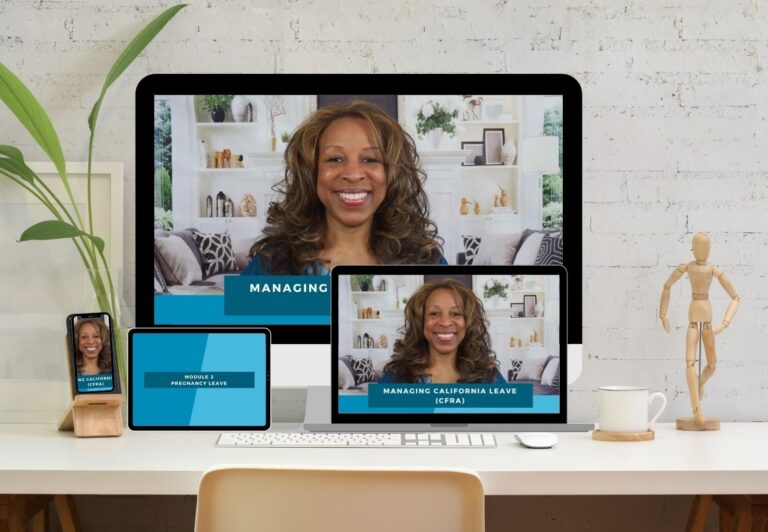The Feedback Blueprint
A Comprehensive Guide for Constructive Critique

By VICKY BROWN
If you manage people, sooner or later, you’re going to have to give them feedback. More specifically, you’re going to find yourself in a situation where you have to give them negative (or should I say) constructive feedback.
There’s no doubt about it – it’s a sensitive process, and you’ll have to give it careful thought and be armed with all the tact you can muster. Do it wrong, and you’ll end up with a resentful employee, a broken relationship, and to top it off – you won’t get the behavior change you’re looking for.
Ah, but do it right, and you can really turn the situation around. Get the employee on the right track, and – if you really do it right – enhance your relationship and help them be more engaged.
First of all – don’t try to fly by the seat of your pants here. You’ve got to do some advance prep work before you meet with the employee. And, as an extra added bonus – that means you aren’t just snapping at someone in the moment. When that happens, it usually means you are just blowing off steam -and that siphons off your power, doesn’t get you the outcome you want and generally just isn’t a very good idea. No, before you sit down with the person, make sure you have all the details of the situation ready. And, if you can give specific examples – that’s even more helpful. Vague observations like “you’re always late” aren’t helpful; and open you up to a tit for tat conversation. Something like, I’ve noticed that in the last 4 weeks you have been late more than 20% of the time.
Now, that’s a statement to begin constructive feedback. It’s factual and specific – and when you say something like that, the employee already knows that, if needed, you’ll be able to cite specific instances. So they won’t even start the back and forth of ‘yes you did / no I didn’t’.
Next – and I can’t express how important this point is – make sure you are in a private setting.
Dressing someone down in public isn’t really to help them improve (and by the way – that is after all the point of giving constructive feedback – to help the person improve). No, doing that in public isn’t designed to help them improve, it’s designed to put on a public display – a show. And the most likely outcome is that you will humiliate them and make them feel small.
Now, just think back to the last time that happened to you. Did you feel yourself open like a flower to training and coaching. Um, no – I don’t’ think so. If you’re anything like me, you emotionally curled in on yourself in the most protective posture possible, and proceeded to internally defend yourself in every way possible. “They don’t know what they’re talking about” “I’ve never done that” “That’s bull – beep”
Believe me – I wasn’t open to really looking at the criticism – um I mean feedback, in a positive way. More like – I became an expert at rationalizing it away. So remember – do it in private. This is communication just for you and the person. You don’t need an audience.
“… once you’ve delivered the message you needed to deliver – well now it’s time to listen to their side. And when I say listen, I mean really listen. Actively listen. Give them a chance to explain their behavior“
Be clear, direct and specific about what the issue is. Like I mentioned earlier, being vague isn’t helpful and can only cause problems in the communication. Now a bit on the flip side – don’t be overly critical or use language that is over-reaching. And whenever possible, use specific examples to clarify your points.
Now I kind of touched on this before – but I think it needs its own callout. When you give feedback, it should be for the purpose of teaching the person, not just giving you a chance to vent. So don’t go into this meeting thinking about how annoyed you are, or hell bent on ‘letting them have it’. That is not – I repeat – is not, the purpose of giving constructive feedback. My goodness, its even in the name – constructive. Yelling at someone isn’t constructive – in fact, it’s the exact opposite.
And while we’re on volume – be sure your tone is positive. Even though the feedback may be negative in nature, make sure that the overall tone of the conversation is positive. Focus on the behavior, not the personality. Make sure it’s all about the employee’s behavior or performance, not them as a person. The last thing you want them feeling is that they are a victim or are being attacked in any way. You don’t have to be Polly Sunshine, but do things like using the sandwich technique to help point the conversation in the right direction.
I’m sure you know the sandwich technique. It’s when you start the conversation with something positive, then address the area for improvement (that’s the negative feedback part), and then end with something positive:

So, one of your employees just told you that she’s pregnant. Feeling overwhelmed, with no idea where to start? After all, HR just got dumped on your plate. It’s not your zone of genius, and you don’t want it to be.
Managing California Leave is your answer. It’s an easy to understand course, that explains what the various leave programs are – without the HR gobbledy gook. And it gives you a clear step by step guide that walks you through the process of putting someone on leave
Yep, you get all the forms, notices and documents too. Everything you need to do it right and do it fast. After all, you don’t have all day – you have other things to do!
Use the link to get an Insider’s sneak peek And don’t worry – you’ve got this. And we’ve got you.
So that might go something like, “I love the way you dig into the detail in your reports. It helps you see insights that we had overlooked in the past. But, I have noticed that your reports are consistently late – in fact, 4 of the last 6 reports were turned in past the due date. It’s great that you have control of the data, but I need you to exercise that same control over time management to be successful with this reporting. I’m confident that going forward the reports will be ready on time – and if you need any help in that, just let me know, I’m happy to provide any support you feel you may need. And keep up the excellent detail work.”
See what I did there? Started and ended with something positive. Put the corrective language in the middle. Made it direct and specific. Kept the tone positive, and made it about the behavior not the personality.
Now, once you’ve delivered the message you needed to deliver – well now it’s time to listen to their side. And when I say listen, I mean really listen. Actively listen. Give them a chance to explain their behavior – who knows – there may be factors at play that you have no idea about. And, when you actively listen, it helps the employee feel heard and respected.
In fact, active listening, is actually a thing. Active listening is the process of actively paying attention to what the other person is saying, and engaging with them in a way that shows that you understand and care about their concerns. This means putting away distractions, making eye contact, and asking follow-up questions to clarify any points that are unclear, or that you don’t quite understand.
So Active Listening will play a huge part in giving constructive feedback.
Once everyone has been heard, then it’s time for you to clearly articulate your expectations; and offer guidelines for improvement.
And then, when you end the meeting, end on a positive note. Reinforce your confidence in their ability to improve, and be a valuable contributor to the team.
And finally, be sure to follow up – don’t just leave them hanging. Check in after a period of time; see if there’s been improvement. You want to show them that you’re invested in their progress. And as a bonus, it gives you a chance to acknowledge their improvement – might as well make them feel good about their progress, right?
Spread the word
MORE HUMAN, MORE RESOURCES
310.308.7680 option 1
hello@idomeneoinc.com

